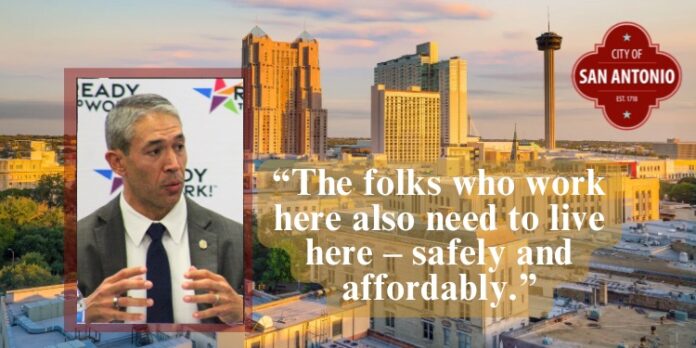San Antonio’s Ready to Work Program Transforms Local Workforce and Economy
San Antonio’s Ready to Work job training program has hit its stride with more than 6,700 participants enrolled in training and some 750 workers placed in good jobs.
The post-pandemic world brought new challenges and changes,but San Antonio has emerged with a resolve that’s second to none.
The Brookings Institute recently reported that in contrast to the decade prior – the San Antonio region has closed the income and poverty gaps between our richest and poorest communities at a rate faster than nearly every city in the nation.
The momentary crises we’ve dealt with over the past few years have illustrated a more permanent and precarious situation faced by our neighbors. The optics may be less glaring today in the post-pandemic era, but too many San Antonio families remain a missed paycheck away from disaster.
In November 2020, San Antonio spoke with one resounding voice and said ‘yes’ to the Ready to Work program – committing to train and educate thousands of workers and creating a pipeline of trained employees that can meet any employer’s needs.
It is important to remember that dollars collected for the program are not spent until a participant is receiving training. New revenue will stop coming in 2026, but the funds that have been collected will continue to be used for continued training.
The program will remain in operation until we have trained as many San Antonians for better careers as possible.
The Ready to Work team is adapting to conditions on the ground with common sense flexibility by adjusting the protocols to ensure more workers who want to improve their career options can get access to the life-changing training.
We’re entering uncharted territory as we create a coordinated workforce development ecosystem at a scale unparalleled in our city’s history – maybe in any city’s history. Training for new careers and finishing degrees is vital.
More than 1,250 individuals have completed training programsand more than 50 percent of graduates are already on the job.
Notably, we’ve spent less than 15 percent of the available fundsbecause those dollars only go out the door when someone enrolls in training. The total cost averages around $6,000 for every participant.
The average wage increase for those who are already on the job is more than triple what it’s costing us to train them.
The math is clear, and this program is going to change the lives of thousands of San Antonio residents.
This city has always had the talent – we just lacked the opportunity to focus on bringing that talent into the workforce of tomorrow.
If you are interested in participating, go to readytoworksa.com.
The folks who work here also need to live here – safely and affordably.
Seven years ago, I pledged to reduce the burdens imposed by housing costs through compassionate and thoughtful policies.
It is not controversial to say that if you live in San Antonio, you deserve every opportunity to age in place, affordably scale up, get off the street, find the perfect home, or retire worry-free in the city we all know and love.
In 2021 – we went to the voters, seeking authority to change our city charter to enable what became the city’s first voter-approved affordable housing bond in May of 2022.
Your collective support of the $150 million housing bond became a lifeline for several affordable housing projects that faced significant gaps due to rising construction costs, interest rates, and inflation over the last two years.
The result? By the end of last year we broke ground on over 1,000 new multifamily units made possible with the bond’s gap financing.
We should all be proud of the important progress our city has made on workforce development and housing affordability.
Ron Nirenberg is mayor of San Antonio.








